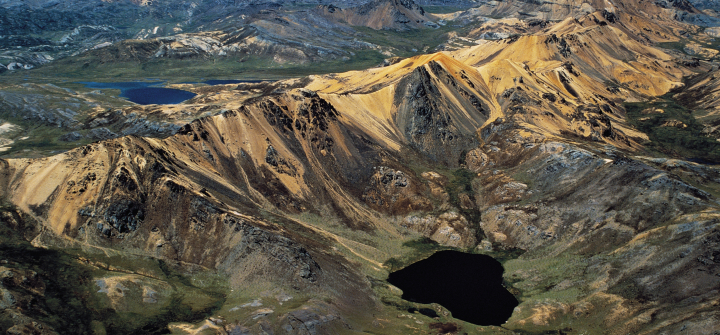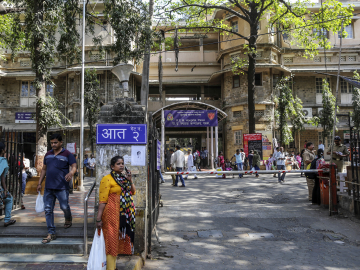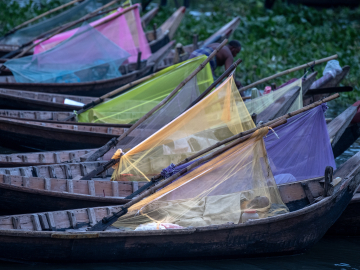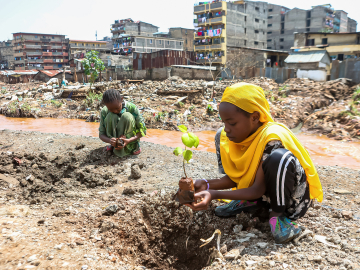The Mystery of Chronic Mountain Sickness in the Andes
HUAYLLAY, Peru—Omar Raraz remembers visiting a farm near his parent’s hometown when he was a kid. He always hoped to see newborn livestock but was always disappointed.
None of the calves, born on the farm at more than 4,300 meters (14,206 feet) above sea level, ever survived.
The memory of those visits came rushing back in 2004 when he attended a conference on high-altitude biology in 2004.
“What happened on the farm was something always in the back of my mind. When I attended this conference, I suddenly realized that what was being discussed applied to my wonderings about the cattle,” says Raraz, MD, now a specialist in internal medicine with a focus on occupational health.
The conference’s insights on oxygen deficiency at high altitudes led Raraz, 39, to try to understand chronic mountain sickness (CMS).
While there are no exact numbers, researchers estimate that between 5% and 10% of the population living above 2,500 meters (~8,200 feet) are at risk for CMS, according to a 2016 article in the journal High Altitude Medicine & Biology.
That represents roughly 1 million people in Peru alone.
An Unusual Disease
CMS is characterized by low levels of oxygen saturation (hypoxia) and excessive amounts of hemoglobin (polycythemia), which lead to a long list of other conditions that start out relatively benign, such a blue-tinged fingertips or lips. But the illness can progress to life-threatening pulmonary or cerebral edema. The only cure today is moving to a lower altitude, per the High Altitude Medicine & Biology article.
The disease was first described in a letter to Peru’s National Academy of Science in 1925 by Peruvian doctor Carlos Monge. He presented the case of a patient with symptoms now known as CMS. The disease is also known today as Monge’s disease.
Raraz works with miners who extract base metals like copper and zinc in Huayllay, a small town about 30 miles from Cerro de Pasco, which is called the highest city in the world. Cerro de Pasco began as a mining town and part of the city still sits perched above what was an open pit mine. It is always cold and often wet. The elevation makes breathing difficult for most visitors—and even some locals.
Raraz spends a few days a month in Huayllay, evaluating miners’ fitness to work at elevations that can top 4,500 meters (nearly 15,000 feet). He routinely provides guidance to miners with CMS, some with blood oxygen saturation levels below 90%. (The lower recommended limit in healthy adults is 95%.) Their hemoglobin levels often top 20 grams per deciliter—the normal range is 13.5–17.5 grams in men and 12.0–15.5 grams in women, per the American Red Cross.
A few of Raraz’s patients have developed blood clots, while others experience sleep disturbances and a few have pulmonary hypertension. The majority, however, have only slight symptoms, such as cyanosis, the bluish discoloration of lips and palms, or enlargement of veins in the hands and feet, which are typical in CMS patients, says Raraz. He rarely sends a worker to live in lower elevations because of CMS, but has recommended that some transfer to different jobs, usually from actual mine work to administrative positions.
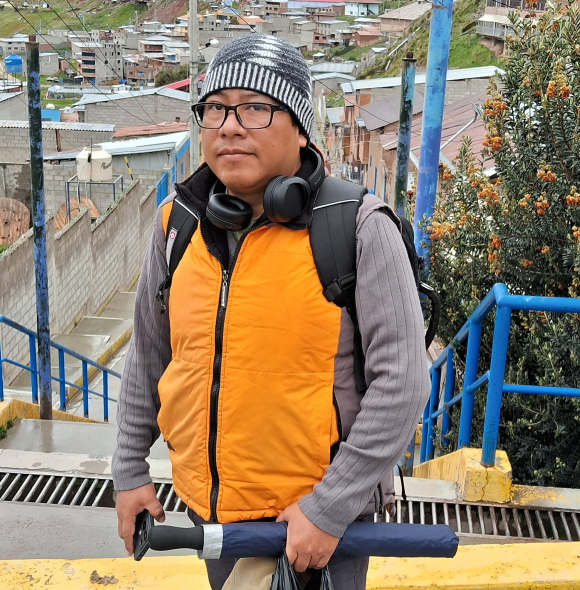
Omar Raraz, MD, a specialist in internal medicine with a focus on occupational health.
The Bloodletting Remedy
Artica Chávez, 63, is a typical patient. First diagnosed with CMS in 2017, he has permanent cyanosis—his lips have a light blue tinge—but no other symptoms. He stays away from red meat and foods high in magnesium, which can increase hemoglobin levels, and he keeps his weight down. Even with these precautions, his hemoglobin level is 21 grams.
He’s also tried a traditional practice, known as sangria, or bloodletting, with a pint of blood extracted and replaced with a saline solution to reduce hemoglobin amounts.
“I used sangria in the past. It worked, but you must do it all the time. It is better to watch the kind of food you eat,” says Chávez, who is originally from Cerro de Pasco and has worked in mining for 40 years. He says he plans to move to a lower altitude not too far away but when he retires.
Bloodletting is a short-term remedy, Raraz says. It lasts around four to six weeks—about the same time the body takes to replenish red blood cells after someone donates blood. Patients with CMS can also take acetazolamide (a glaucoma medication) or atorvastatin (normally used to lower cholesterol), both of which can lower hemoglobin levels in some patients. While they help, they are not a solution, he says.
All the treatments right now are palliative and focused on relieving symptoms but not addressing the root cause, say Carlos Salinas Salmón, PhD, a researcher at the Bolivian Institute of High-Altitude Biology at the National San Andrés University.
“We believe that there are people predisposed to CMS, but we do not know why,” Salinas Salmón says. “We have not found a gene to say that this is the cause.”
In the absence of a cure, he says the primary recommendation for people with CMS is to go to a lower altitude because the symptoms disappear. “We have never come across a case in which the patient did not improve notably once at a lower altitude,” he says.
Among the generations of scientists following Carlos Monge is Fabiola León-Velarde, DSc, a physiologist and former president of Peru’s National Science, Technology and Technological Innovation Council. She’s spent her career researching CMS.
“CMS is complex and insidious. The drop in oxygen levels produces a symphony of physiological and molecular responses as the person ages,” she says.
While CMS’s telltale bluish hue to lips and fingers can emerge in patients at any age, the most debilitating effects, such as breathing problems, occur in people 65 and older.
A New Research Advance?
Recent research has identified a several factors that seem to play a role in CMS, says León-Velarde, who has studied the effects of diet, obesity, and metabolic disorders on CMS, without finding conclusive links. Other studies have looked at different plants that could potentially unlock a cure. One plant attracting attention is maca, a tuber that is native to Peru and Bolivia and grows at elevations above 3,000 meters. Studies, such as a 2011 article in Evidence-Based Complementary and Alternative Medicine, have been conducted on maca’s impact on multiple health conditions, and Raraz says this could potentially help unlock treatments for CMS.
León-Velarde and colleagues, including Raraz, have also considered environmental factors, such indoor burning of wood or dung for cooking, which can harm the lungs. Studies have also been conducted on heavy metal contamination in places like Cerro de Pasco, but researchers did not find significant differences in lead or copper levels in blood between residents with and without CMS. Some studies, including a 2017 article Respiratory Physiology & Neurobiology, however, have shown a correlation with the presence of cobalt in the blood.
While more research is required, a potential breakthrough could come from the discovery of the hypoxia-inducible factor (HIF), which won three researchers the 2019 Nobel Prize in Physiology or Medicine, León-Velarde says. HIF, in simple terms, directs how cells adapt to low oxygen environments.
While HIF helped explain what cells do when they are oxygen-deprived, but it doesn’t explain why people develop CMS or why they produce so much hemoglobin.
“The discovery of HIF has made things much clearer, but also demonstrated that CMS is even more complex than we thought,” says León-Velarde.
Ed. Note: Our thanks go to Dulce Alarcón-Yaquetto who shared the idea for this issue and was a grand prize winner in the 2023 Untold Global Health Stories Contest, co-sponsored by Global Health NOW and the Consortium of Universities for Global Health.
Join the 50,000+ subscribers in 170+ countries who rely on Global Health NOW summaries and exclusive articles for the latest public health news. Sign up for our free weekday newsletter, and please share the link with friends and colleagues.
The Andes mountain range between Lima and Cerro de Pasco east of Canta. DeAgostini/Getty Images

